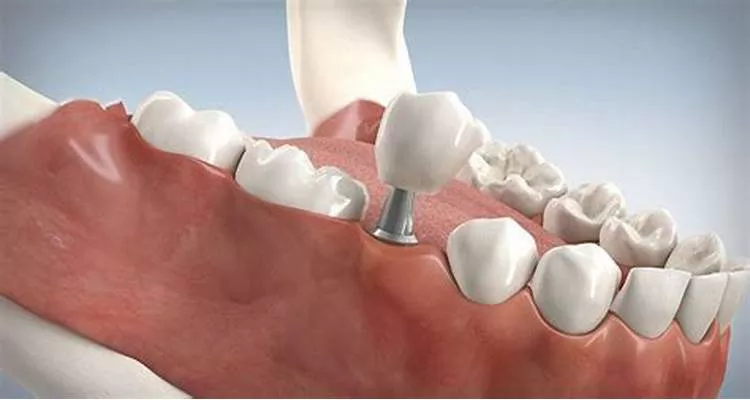Dental implants are a popular solution for replacing missing teeth, offering a natural look and feel. However, like natural teeth, dental implants can develop stains over time. Understanding how to effectively remove these stains is essential for maintaining the aesthetics and longevity of your implants. This comprehensive guide will explore the causes of staining, preventive measures, and the most effective methods for removing stains from dental implants.
Understanding Dental Implant Staining
Dental implants are typically made of a titanium post, which is surgically placed into the jawbone, and a dental crown, which is the visible part of the implant. The crown is often made of porcelain or composite resin, materials that are designed to mimic the appearance of natural teeth. Despite their durability, these materials can still become stained due to various factors.
SEE ALSO: How to Clean All on 6 Dental Implants
Common Causes of Staining
Food and Drink: Consuming foods and beverages that are known to stain teeth, such as coffee, tea, red wine, and certain fruits, can also stain dental implants.
Tobacco Use: Smoking or chewing tobacco can lead to discoloration of both natural teeth and dental implants.
Poor Oral Hygiene: Inadequate brushing and flossing can result in plaque buildup, which can lead to staining and other dental issues.
Medications: Some medications can cause changes in the color of your dental implants.
Aging: Over time, the surface of the dental crown can wear down, making it more susceptible to staining.
Preventive Measures
The best way to deal with staining is to prevent it from occurring in the first place. Here are some preventive measures to keep your dental implants looking their best:
Maintain Good Oral Hygiene
Brush Regularly: Brush your teeth at least twice a day using a soft-bristled toothbrush and non-abrasive toothpaste. Ensure that you brush all surfaces of your teeth and implants.
Floss Daily: Flossing helps remove food particles and plaque from between your teeth and around your implants.
Use an Antimicrobial Mouthwash: Rinsing with an antimicrobial mouthwash can help reduce the buildup of bacteria that can cause staining and other oral health issues.
Watch Your Diet
Limit Staining Foods and Drinks: Reduce your consumption of coffee, tea, red wine, and other staining substances. If you do consume them, try to brush your teeth or rinse your mouth with water afterward.
Stay Hydrated: Drinking plenty of water helps wash away food particles and reduces the risk of staining.
Quit Smoking
Avoid Tobacco Products: Quitting smoking or using tobacco products can significantly reduce the risk of staining your dental implants.
Regular Dental Checkups
Visit Your Dentist: Regular dental checkups and cleanings are essential for maintaining the health and appearance of your dental implants. Your dentist can remove surface stains and check for any potential issues with your implants.
Effective Methods for Removing Stains
If your dental implants have already developed stains, there are several methods you can use to remove them. These methods range from at-home remedies to professional dental treatments.
At-Home Remedies
Baking Soda and Hydrogen Peroxide
Baking Soda: Baking soda is a mild abrasive that can help remove surface stains. To use it, mix a small amount of baking soda with water to form a paste. Apply the paste to your toothbrush and gently brush your implants.
Hydrogen Peroxide: Hydrogen peroxide has bleaching properties that can help lighten stains. Mix equal parts hydrogen peroxide and water, and use this solution as a mouth rinse. Be sure not to swallow the mixture.
Whitening Toothpaste
Specialized Toothpaste: Use a toothpaste specifically designed for whitening. These toothpastes contain mild abrasives and other ingredients that help remove surface stains.
Whitening Strips
Over-the-Counter Strips: Whitening strips are available over the counter and can be used to remove stains from dental implants. Follow the instructions on the packaging for best results.
Professional Dental Treatments
Professional Cleaning
Scaling and Polishing: A professional cleaning at your dentist’s office can effectively remove surface stains from your dental implants. Your dentist will use special tools to scale and polish your teeth and implants.
Professional Whitening
In-Office Whitening: Professional whitening treatments are available at your dentist’s office. These treatments use stronger bleaching agents than over-the-counter products and can produce more noticeable results.
Custom Whitening Trays: Your dentist can provide you with custom-made whitening trays and a professional-grade bleaching gel to use at home. This method allows for a more controlled and even whitening process.
Ultrasonic Cleaning
Ultrasonic Scalers: Ultrasonic scalers use high-frequency vibrations to remove stains and plaque from dental implants.
This for deep cleaning and stain removal.
Tips for Long-Term Maintenance
To keep your dental implants looking their best over the long term, follow these additional tips:
Use a Soft-Bristled Toothbrush
Gentle Brushing: A soft-bristled toothbrush is less likely to scratch the surface of your dental implants, which can make them more prone to staining.
Avoid Abrasive Toothpaste
Non-Abrasive Formulas: Choose a non-abrasive toothpaste to avoid damaging the surface of your dental implants.
Regularly Replace Your Toothbrush
New Toothbrushes: Replace your toothbrush every three to four months, or sooner if the bristles become frayed.
Consider an Electric Toothbrush
Enhanced Cleaning: Electric toothbrushes can provide a more thorough cleaning compared to manual toothbrushes, which can help prevent stains from forming on your dental implants.
Use a Water Flosser
Water Flossers: Water flossers use a stream of water to remove food particles and plaque from between your teeth and around your dental implants. They can be particularly effective for cleaning hard-to-reach areas.
Conclusion
Maintaining the appearance of your dental implants requires a combination of good oral hygiene, dietary awareness, and regular dental checkups. By following the preventive measures outlined in this guide and using the recommended methods for removing stains, you can keep your dental implants looking bright and beautiful. If you have any concerns about staining or the health of your dental implants, be sure to consult your dentist for personalized advice and treatment options.

